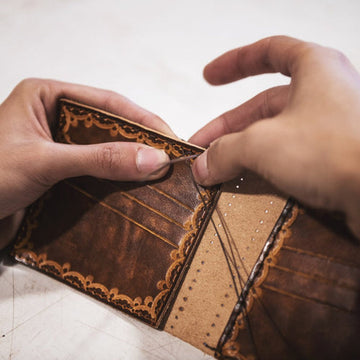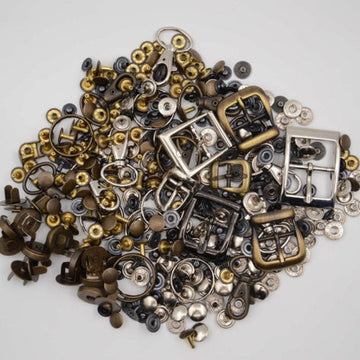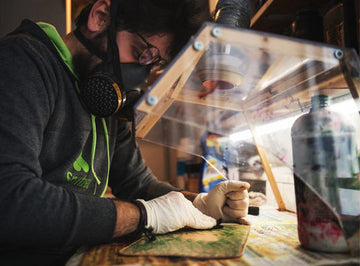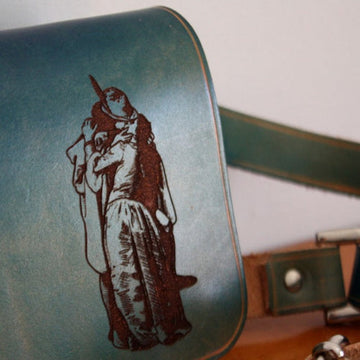Depending on the hole made on the piece of leather, a different type of thread will be used. There are three types of threads that can be used:
- cotton thread, simple and functional, will be used for holes with a thickness of 0.5 mm;
- waxed cotton thread, more resistant thanks to the wax coating, with a resistance comparable to nylon thread, used for holes with a thickness of 1 mm;
- leather thread, maximum thickness, this type of thread requires very thick holes, and the threads are obtained by fraying a piece of leather.

The choice of thread will also be commensurate with the weight that the item will have to support. A simple women's handbag will support less weight than a duffel bag, which will require a strong stitching that only leather thread can support. While a cigarette case will require a thin thread such as simple cotton, since the weight supported will be practically zero.
Once the right thread for your needs has been chosen, the craftsman can also choose the type of stitching to apply, which can be:
– flat stitching; the thread goes out and returns inside the holes with one pass towards the outside and one towards the inside respectively;
– cross stitching; the thread goes and returns inside the holes always from the same side.
The stitching obviously will not only have the function of supporting and joining the different sections of the leather in a single product, but also serves as decoration. Like any other production process, even for this one nothing is left to chance.
“Pulling the strings” of the production of a Dealfa item, we are faced with a product that is practically finished, and ready for its final production step.
In the next article we will tackle the finishing touches, the last step towards a complete Dealfa article.





